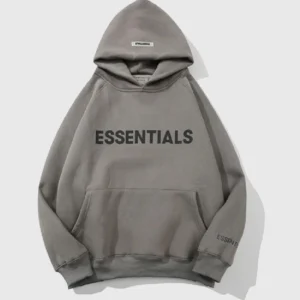Walking down the cereal aisle of any grocery store, you’re greeted by a colourful array of cereal boxes in every shape and size. These boxes are more than just packaging; they serve multiple essential functions that help preserve the freshness of your cereal, provide easy storage, and even convey a brand’s identity. Whether you’re a cereal lover, a parent choosing breakfast options, or a business considering packaging options, it’s important to understand why cereal boxes are crucial in the food industry.
In this blog, we’ll examine the role of cereal boxes, their design, benefits, and why they are integral to both the consumer experience and the cereal brand’s success.
The Key Roles of Cereal Boxes
A cereal box does far more than simply hold cereal. It is a product’s first point of contact with the consumer, and it’s designed with several important functions in mind. Here’s how a cereal box contributes to the overall cereal experience:
1. Protection and Freshness
One of the primary functions of a cereal box is to protect the cereal inside from environmental elements such as air, moisture, and light. Cereal, especially those with grains and sugars, is susceptible to becoming stale or losing its crispness when exposed to air. The box, typically made from a combination of cardboard and an inner liner, serves as a barrier to protect the contents from external factors that can affect freshness.
Additionally, some cereal boxes have built-in features like resealable flaps or inner bags that further preserve the freshness of the cereal once the box is opened. This added layer of protection ensures that your cereal stays crunchy and flavorful for as long as possible.
2. Convenience and Storage
Cereal boxes are designed for ease of use. Their sturdy construction makes it easy to store and stack multiple boxes in a pantry or on a shelf. The flat, rectangular shape allows for efficient use of space, whether you’re organizing a family-sized collection of breakfast options or just a single box.
The design also makes it easy to pour the cereal directly from the box into a bowl, which is an important consideration for consumers looking for a quick and convenient breakfast. Some cereal boxes even have built-in features like pouring spouts, which help reduce mess and ensure the cereal comes out in a controlled manner.
3. Branding and Marketing
A cereal box is one of the most effective tools for branding and marketing in the food industry. The design, colors, logos, and images on the box all work together to create a visual identity that draws consumers in. In fact, many cereal brands are instantly recognizable due to their distinctive box designs.
The packaging also helps communicate important information about the cereal, such as its nutritional value, ingredients, and special features like “high in fiber” or “low in sugar.” These elements are essential in influencing consumer decisions, especially as people become more health-conscious and selective about the food they purchase.
4. Portion Control and Serving Sizes
For many consumers, cereal boxes help guide portion sizes. While some brands include a suggested serving size on the side of the box, others have convenient inner liners that can be resealed after opening to ensure the proper portion remains fresh. Clear labeling helps consumers avoid over-pouring, and many boxes are sized according to the number of servings, so consumers know exactly what to expect when they open the box.
5. Sustainability Considerations
As sustainability becomes an increasingly important factor in consumer purchasing decisions, cereal boxes are being designed with environmental considerations in mind. Many cereal manufacturers are transitioning to recyclable or biodegradable materials to reduce their environmental footprint. Brands are also exploring eco-friendly alternatives such as using less ink for printing and opting for paper-based boxes rather than plastic.
For eco-conscious consumers, the packaging plays a big role in choosing between products. Sustainable packaging options are often highlighted on the box itself, helping to communicate a brand’s commitment to reducing waste and being environmentally responsible.
Types of Cereal Boxes
There are several types of cereal boxes available on the market, each designed to meet different needs and preferences. Let’s take a look at some common types of cereal boxes and their features:
1. Standard Rectangular Box
The standard rectangular cereal box is the most widely used. This box design is typically used for most types of dry cereals and is a reliable, cost-effective packaging option. It allows for a clean, easily recognizable design and is often used for both mass-market and premium cereal brands. The rectangular shape is perfect for storage and display on shelves, both in stores and in consumer pantries.
2. Family-Size Boxes
Family-size cereal boxes are larger and are often used by households that consume cereal in large quantities. These boxes offer more servings per package, making them a more economical choice for families. They usually come in the same rectangular shape but are designed to hold more cereal without increasing the overall footprint too much.
3. Single-Serve or Snack-Sized Boxes
On the opposite end of the spectrum are single-serve or snack-sized cereal boxes. These smaller packages are convenient for people on the go or those who want to control portions more easily. Some single-serve boxes are even sold as part of variety packs, offering a selection of different flavors in smaller, individually packaged servings.
4. Eco-Friendly and Recyclable Boxes
As mentioned earlier, many cereal brands are opting for eco-friendly packaging. These cereal boxes are made from recycled cardboard and are often labeled with recycling symbols to encourage consumers to dispose of the packaging responsibly. These boxes may also be free from plastic linings or coatings, which helps them decompose more easily in landfills.
5. Resealable Boxes
Resealable cereal boxes are becoming more common, particularly for larger, family-size packages. These boxes feature flaps or inner bags that can be sealed after opening, helping keep the cereal fresh for longer. This feature is particularly important for cereals with added ingredients like nuts or dried fruit, which may be more sensitive to air and moisture.
The Marketing Power of Cereal Boxes
Cereal packaging is not just about protecting and preserving the product—it’s also a key element of the branding strategy for many cereal companies. A cereal box is often the first impression a customer has of the brand, and packaging can significantly influence a customer’s decision to buy a product.
Brands use their cereal boxes to tell a story, highlight special features, and even create a sense of nostalgia. The use of bold colors, fun illustrations, and characters (like Tony the Tiger or Snap, Crackle, and Pop) helps build emotional connections with consumers. Packaging can also convey a brand’s commitment to health, sustainability, or family-friendly values, depending on the target audience.
In addition, companies often use limited-edition boxes or promotional designs to attract attention and drive sales, creating excitement and encouraging consumers to buy based on the novelty or exclusivity of the packaging.
Conclusion
The cereal box is far more than just a container for breakfast food. It plays an essential role in protecting the cereal, preserving its freshness, and making it easy to store and use. Beyond that, the cereal box is a powerful marketing tool, helping brands establish their identity and communicate with consumers.



